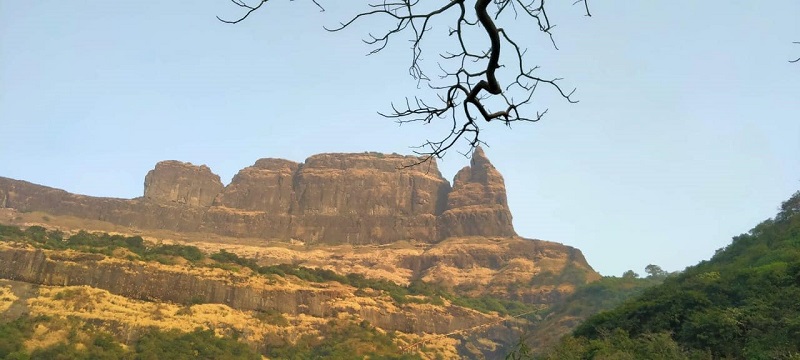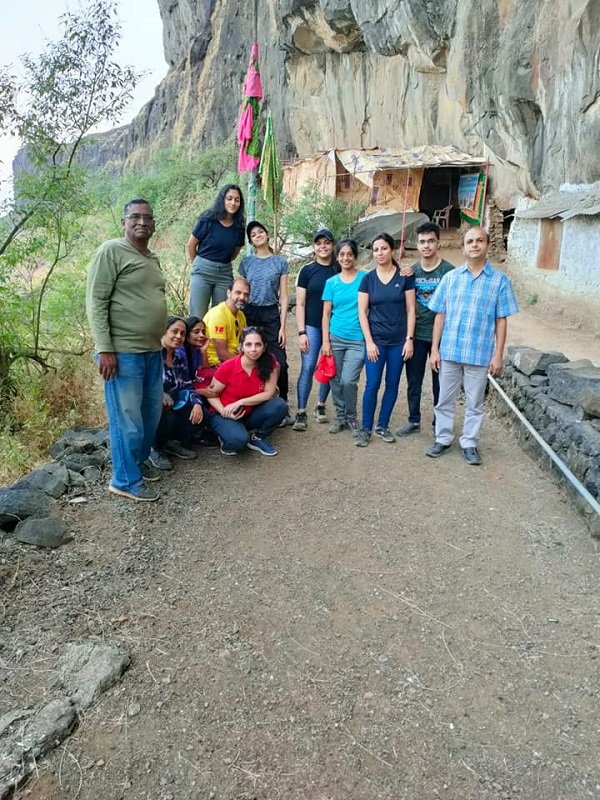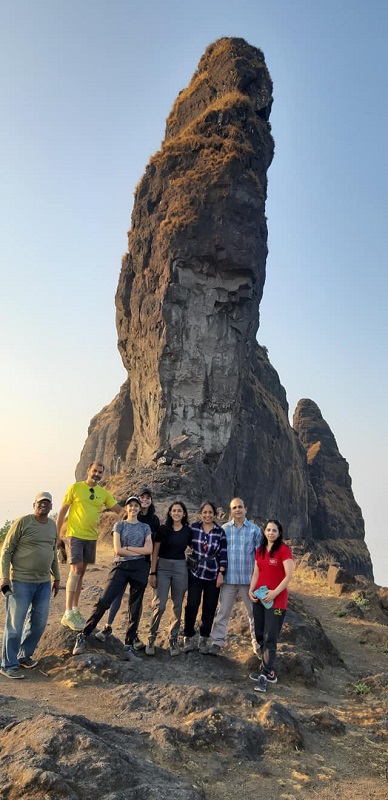25th and 26th January 2021
Trekking is no easy feat, it takes stamina, determination and confidence to sail through. But the sweet joy once you reach the pinnacle after putting yourself through all that pain, exertion and dehydration more than compensates for your efforts. Memories and pictures are a bonus.
The climb from the base camp of Haji Malang wadi bus stop to Haji Malang Dargah is about two and a half hours. For the first part of the trek, you are in the company of countless devotees. Two major stops along the trek are for two small dargahs called the Pehli Salami and Doosri Salami. The third dargah is the main Haji Malang dargah and the final base for us as we chose to stay here and start the Malang gad trek the next day morning. The stay at Apsara hotel at Haji Malang dargah and a special visit to Guruvarya Abdul Rehman were the highlights of the day thanks to Santosh Singh, the trustee who was accompanying us on the trek. After a warm welcome at each dargah, we rested at this place. We offered a chaddar (religious cloth) at the Haji Malang Dargah the next day morning before moving onward.
Malang gad Fort in Maharashtra is unique. It depends on natural aspects of the mountain to defend itself. Maharashtra forts usually have several gates and watchtowers to attack the enemy and protect the region. Malang gad entirely depends on the natural shape of the mountain for fortification.
The route to the Malang gad fort is a small lane near the main dargah that can easily miss the eye since it is hidden among shops and houses. You need to head back from the dargah to find this lane that goes towards the Malang gad fort. Honestly, this is where the actual trek begins. While the route to the dargah was about climbing concrete steps, the route to the Malangadd fort is all about climbing treacherous rocks and boulders. There are narrow rock-cut steps that lead you to the summit. The climb is absolutely thrilling and you’re rewarding with Instagram-worthy pictures.
While we were happy to reach this spot and were soaking up the view, the trek was not complete yet. As you keep moving forward, there is a route along the side that leads you towards the Malangadd fort. The climb here onward gets steep and at one point you need to harness yourself and walk on a narrow path. It was an extremely tiring trek and we were happy to reach back after breakfast at Haji Malang dargah and a further fast descend to our car parking at the bus stop down.
History: During the 7th century Maurya dynasty, a king named Naladev built a fort in Malangadd. Later, the fort came under the Maratha rule and then it was captured by the British in 1780. After the Anglo-Maratha treaty in 1781, the British had to leave the fort, however, they regained control after the Peshwas rule weakened post-1817. As for the dargah, in the 12th century, Haji Abdur Rahaman, a Sufi saint from Yemen chanced upon this hill and made it his base. It is believed that the hill was originally thrice its size but was magically scaled by the saint. In his memory, devotees built a shrine – Haji Malang Dargah, a popular pilgrimage site today.





